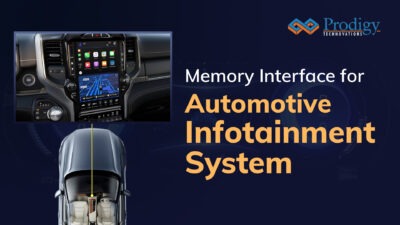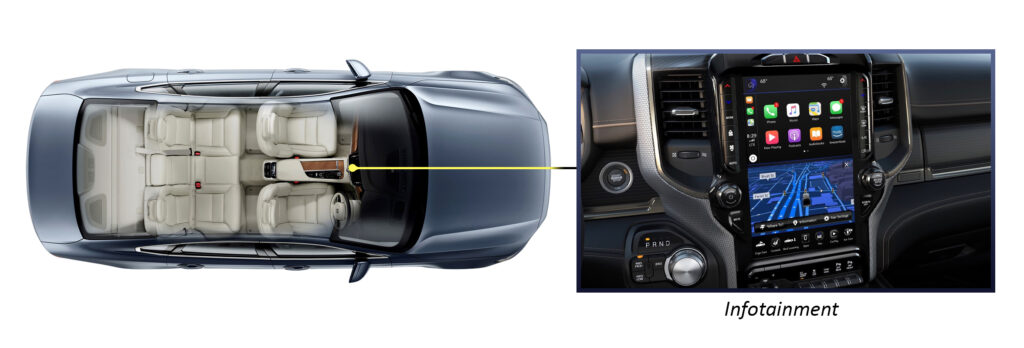
Memory Interface for Automotive Infotainment System.
The automotive industry is going through a massive transformation. The consumer-based digital technologies and experiences are pushing the car in vehicle Information system to the next level. Consumers are asking for cars with mobile-like experiences. The Infotainment system needs to provide a touch-like experience and also support heavy workloads of storage map and navigation data as the car gets connected to the cloud.

How does the car OEM go ahead and select the memory for the next-generation Infotainment system?
What are the factors for selecting the automotive Infotainment memory solution?
Automotive Infotainment memory solution is selected based on the following factors
- Storage Capacity
- Performance
- Speed
- Reliability
- Faster Read and write cycles
Traditionally the memory had limited applications and one would go ahead with the Emmc Interface, however, the current emmC has run out of capacity when coming to advanced Infotainment system applications in the car.
What are the limitations of emmC when it comes to the Infotainment system?
- Emmc has a limited number of reads that are written like any other flash architecture and the memory begins to start to degrade. The automotive life span is over 10 plus years however memory card storage ie 8GB emmC would have a life of up to 4 years. Most advanced cars like Tesla earlier used 8GB storage and had to replace them with 64GB storage for the emmC ensuring longer life of the emmC.
- High Definition of media playback operations: The next generation of consumers is demanding new experiences like augmented reality and immersive experience. This is forcing car manufacturers to look at advanced technologies which can offer simultaneous read-write cycles. EMMC is half duplex ie it can either support the read or write cycle.
- Data Integrity: Emmc offers very limited support for data integrity such as write protection and error correction.
What is the path forward?
UFS seems to have very promising technology offering a good replacement solution for the Emmc when it comes to the Infotainment system. UFS is much faster and is already used in current-generation mobile to offer an immersive experience. UFS offers a full duplex interface for read and write increasing speed and giving high performance and also speeds up to 4800MB/s and vendors like Samsung have released memory chips supporting up to 1TB of data. UFS is engineered to support low-power mode which is extremely important for any automotive application. UFS also has advanced features like Error correction to have safe and reliable storage for automotive applications. We have to wait and see how the various memory vendors like Kioxia, Samsung, and Silicon Motion have their solutions for Automotive grade UFS.
Prodigy Technovations offers state of art advanced tools to test UFS, emmC, and PCIe interfaces of the memory. The tools can help automotive car manufacturers debug protocol data and help find out very critical timing and protocol integrity issues.



